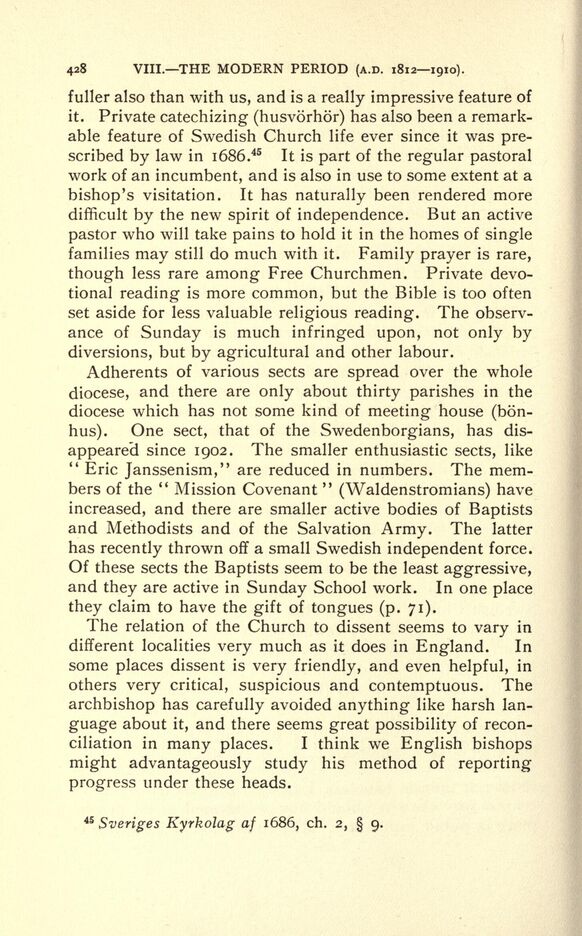
Full resolution (JPEG) - On this page / på denna sida - VIII. The Church in the last century (1811—1910 A.D.)

<< prev. page << föreg. sida << >> nästa sida >> next page >>
Below is the raw OCR text
from the above scanned image.
Do you see an error? Proofread the page now!
Här nedan syns maskintolkade texten från faksimilbilden ovan.
Ser du något fel? Korrekturläs sidan nu!
This page has never been proofread. / Denna sida har aldrig korrekturlästs.
428 VIII. THE MODERN PERIOD (A.D. 18121910).
fuller also than with us, and is a really impressive feature of
it. Private catechizing (husvorhor) has also been a remark
able feature of Swedish Church life ever since it was pre
scribed by law in i686.45
It is part of the regular pastoral
work of an incumbent, and is also in use to some extent at a
bishop s visitation. It has naturally been rendered more
difficult by the new spirit of independence. But an active
pastor who will take pains to hold it in the homes of single
families may still do much with it.
Family prayer is rare,
though less rare among Free Churchmen. Private devo
tional reading is more common, but the Bible is too often
set aside for less valuable religious reading. The observ
ance of Sunday is much infringed upon, not only by
diversions, but by agricultural and other labour.
Adherents of various sects are spread over the whole
diocese, and there are only about thirty parishes in the
diocese which has not some kind of meeting house (bon-
hus). One sect, that of the Swedenborgians, has dis
appeared since 1902. The smaller enthusiastic sects, like
"
Eric Janssenism," are reduced in numbers. The mem
bers of the
"
Mission Covenant "
(Waldenstromians) have
increased, and there are smaller active bodies of Baptists
and Methodists and of the Salvation Army. The latter
has recently thrown off a small Swedish independent force.
Of these sects the Baptists seem to be the least aggressive,
and they are active in Sunday School work. In one place
they claim to have the gift of tongues (p. 71).
The relation of the Church to dissent seems to vary in
different localities very much as it does in England. In
some places dissent is very friendly, and even helpful, in
others very critical, suspicious and contemptuous. The
archbishop has carefully avoided anything like harsh lan
guage about it, and there seems great possibility of recon
ciliation in many places. I think we English bishops
might advantageously study his method of reporting
progress under these heads.
45
Sveriges Kyrkolag af 1686, ch. 2, 9.
<< prev. page << föreg. sida << >> nästa sida >> next page >>